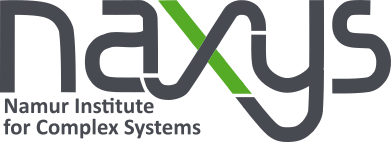
- This event has passed.
Ana Paula Millán Vidal (Amsterdam UMC, Netherlands)
April 27, 2021 @ 13:00 - 14:00
Title: Brain network models of epilepsy propagation and surgery
Clinical network neuroscience aims to apply the knowledge and tools from network science to study brain network topology in neurological and psychiatric diseases. This idea stems from the description of the brain as a complex network whose underlying structure and dynamics give rise to the emergent behaviour leading to cognition. How is this structure altered in different brain disorders [1]? And how can we apply this information to every-day clinical practice [2]? Here we will discuss the case of epilepsy, a neurological disorder that affects between 4 and 10 per 1000 people worldwide [3]. There is not one single cause of epilepsy: it often occurs as an associated symptom of an underlying disease, but many other times it is produced by unknown causes [4]. For patients who do not respond to medication (roughly 1 out of 3 people), epilepsy surgery is the treatment of choice if a focal origin can be found. However, seizure-freedom is currently achieved in only 2/3 of the patients after surgery. Brain networks in patients with epilepsy have been found to deviate significantly from the healthy brain, even when seizures have a local origin. In order to study how alterations in the underlying network and dynamics can lead and promote seizure propagation, computational models are used to mimic seizure generation and propagation. These allow us to test in silico different resections before the actual surgery, with the ultimate goal to improve surgery outcome and reduce side-effects. The choice of the network and dynamical model is the first step on this analysis. Simpler models allow for more computational tractability and theoretical analysis. In particular, we have modelled seizure propagation as an epidemic spreading process. Fitted with patient specific data, the model can capture the fundamental aspects of clinically observed seizure propagation, and can be used to test virtual resections in silico. Combined with optimization algorithms, smaller or alternative resection strategies, that are individually targeted for each patient, can be determined with the ultimate goal to improve surgery outcome.
Link to the seminar here
People outside Université de Namur with a Microsoft Teams account may join. For any questions, write to riccardo.muolo@unamur.be

